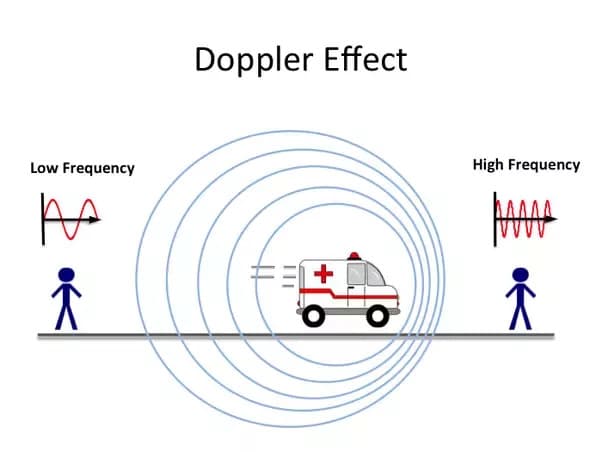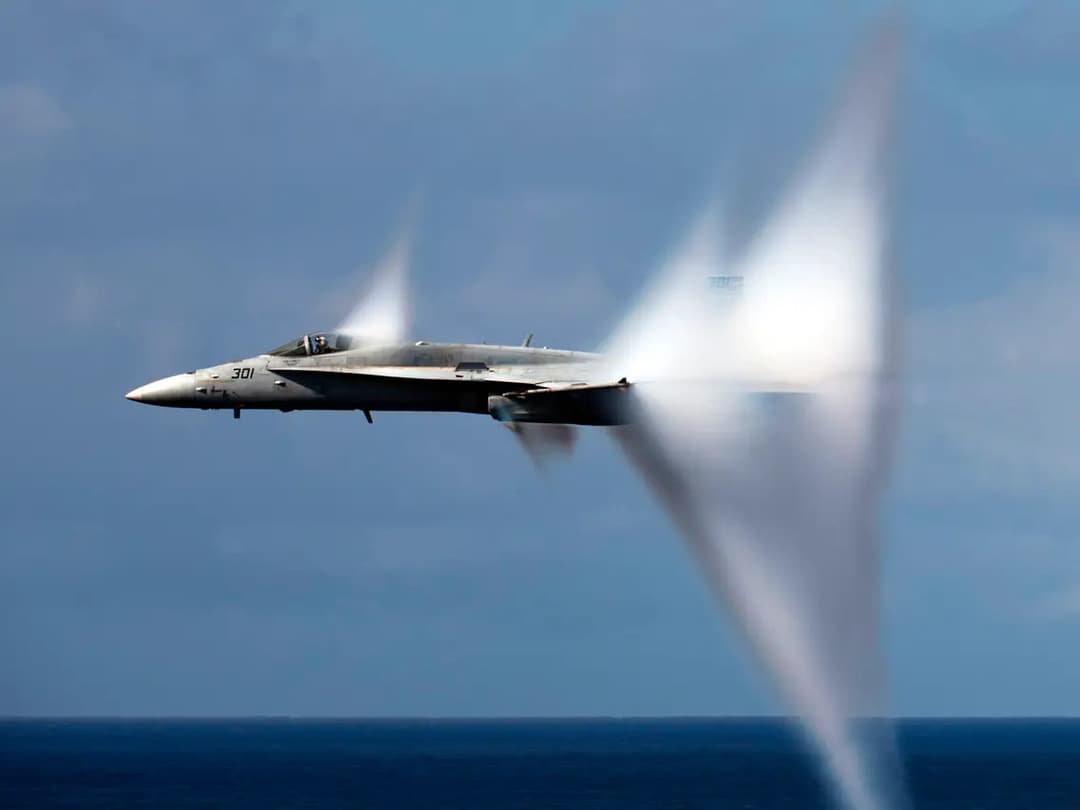Section 4: The Doppler Effect
Section Learning Outcomes:
Section Key Terms:
Bored Already? Press the buttons to dive into applications!
Lesson 1: The Doppler Effect of Sound Waves
The Doppler Effect
The is a phenomenon that occurs when there is relative motion between a source of waves and an observer. It causes a change in the perceived frequency or pitch of the waves.
To understand the Doppler Effect, let's imagine a person standing by the side of a road, listening to an ambulance approaching and then driving away, as seen in Figure 1. As the ambulance gets closer, the sound waves it produces get compressed or squished together. This causes the sound waves to reach the person's ear more frequently, so they perceive a higher pitch or frequency. It's similar to when a musical note sounds higher when played on a smaller instrument, such as a piccolo. Now, when the ambulance passes by and moves away, the sound waves get stretched out. They take longer to reach the person's ear, resulting in a lower pitch or frequency. This is similar to when a musical note sounds lower when played on a larger instrument, like a tuba.

Figure 1: As the ambulance travels to the right, there is a Doppler shift of the sound waves. This causes an observer behind the ambulance to observe a lower frequency and an observer ahead of the ambulance to observe a higher frequency (University of Saskatchewan).
This change in pitch or frequency is what we call the Doppler Effect. It happens not only with sound waves but also with other types of waves, like light or radio waves.
For a stationary observer and a moving source of sound, the frequency (fobs) of sound perceived by the observer is
where fs is the frequency of sound from a source in Hertz (Hz), vs is the speed of the source in m/s along a line joining the source and observer, and vw is the speed of sound in m/s. The minus sign is used for motion toward the observer, while the plus sign is for motion away from the observer.
Note that the greater the speed of the source, the greater the Doppler shift. Similarly, for a stationary source and moving observer, the frequency perceived by the observer (fobs) is given by
where vobs is the speed of the observer in m/s along a line joining the source and observer. Here the plus sign is for motion toward the source, and the minus sign is for motion away from the source.
Lesson 2: Sonic Booms and Mach Speed
Breaking the Sound Barrier
What happens to the sound produced by a moving source, such as a jet airplane, that approaches or even exceeds the speed of sound? Suppose a jet airplane is coming nearly straight at you, emitting a sound of frequency fs. The greater the plane’s speed, vobs, the greater the Doppler shift and the greater the value of the observed frequency fobs. Now, as vobs approaches the speed of sound, vs, fobs approaches infinity, because the denominator in the equation for the Doppler shift approaches zero.
This result means that when observing the jet from ahead of the source, each wave is superimposed on the previous one because the source moves forward at the speed of sound.The observer gets them all at the same instant, and so the frequency is theoretically infinite. If the source exceeds the speed of sound, no sound is received by the observer until the source has passed, so that the sounds from the source, when it was approaching, are stacked up with those from it when receding, creating a . A sonic boom is constructive interference of sound created by an object moving faster than sound.

Figure 6: An F/A-18C Hornet breaking the sound barrier (US Navy)
An aircraft creates two sonic booms, one from its nose and one from its tail. During television coverage of the space shuttle landings, two distinct booms could often be heard. These were separated by exactly the time it would take the shuttle to pass by a point. Observers on the ground often do not observe the aircraft creating the sonic boom, because it has passed by before the shock wave reaches them. If the aircraft flies close by at low altitudes, pressures in the sonic boom can be destructive enough to break windows. Because of this, supersonic flights are banned over populated areas of the United States.
When an aircraft or car gets close to or goes faster than the speed of sound, a different unit is often used to describe speed. This is known as the . Mach 1 is defined as the speed of sound at a given air temperature. Any ratio of speed to the speed of sound is expressed in terms of a Mach number, M, and is given by:
If the speed of the aircraft or car is greater than the speed of sound in a particular medium, the speed is referred to as . For aircraft, supersonic speed means travelling faster than the speed of sound in air, which is approximately 343 m/s (1235 km/h). If the aircraft is travelling at a speed less than the speed of sound in a particular medium, the speed is referred to as . Most conventional aircraft, such as commercial airliners, operate in subsonic range, typically at speeds around 900 to 950 km/hr. When the speed of the aircraft or car reaches speeds around Mach 5, the speed is referred to as . At hypersonic speeds, the behavior of airflow around an object becomes highly complex, and phenomena such as shock waves and intense heating of the object occur due to the high-speed interaction with air molecules.